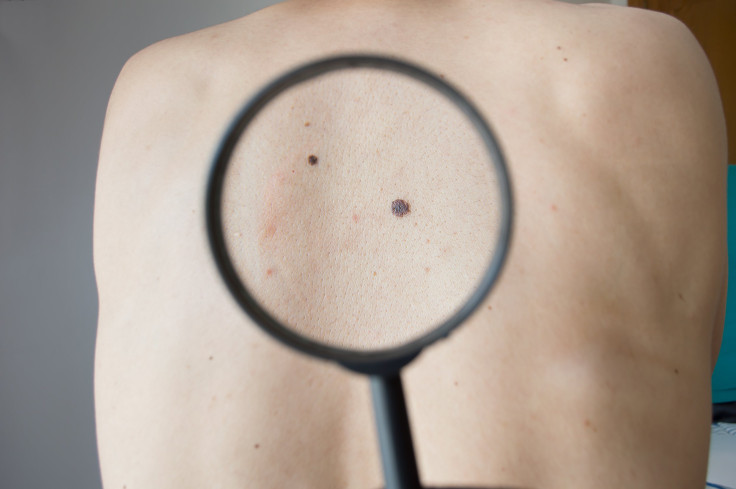Melanoma May Be More Dangerous When It's Not Associated With Moles On Skin

It’s relatively well known that people with moles on their skin should pay attention to them, as any unusual growths could be early warning signs of melanoma, a deadly and aggressive form of skin cancer. But really, only about 20 to 30 percent of melanomas are associated with moles, researchers who worked on a new study found, meaning most melanomas may suddenly appear. Most concerning, however, is these melanomas may be more aggressive than those associated with moles.
Dr. David Polsky, the study’s lead researcher and a professor of dermatology, pathology, and dermatologic oncology at the New York University School of Medicine, told Live Science there may be “biological differences” between melanomas that grow on moles and those that suddenly appear. It’s possible these differences are also what cause the disease to be more aggressive, he said. The results of the study were presented June 1 at the annual meeting of the America Society for Clinical Oncology.
The study examined the outcomes of 2,250 patients with melanoma. It accounted for whether the diseases were associated with moles or not, as well as the person’s age, where the cancer appeared on the patients’ bodies, tumor thickness, disease stage, and a number of other factors. They found people whose melanomas arose without the presence of a mole were 2.35 times more likely to be diagnosed with cancer more advanced than stage 1. They were also less likely to survive as long; only 60 percent survived 10 years after diagnosis — 75 percent of those with mole-associated melanomas survived 10 years.
Because they were at a more advanced stage, these suddenly appearing tumors — known as de novo melanomas — were also more likely to be thicker. These patients were also more likely to be older; have skin that was either broken or uneven where the tumor was present; and have the cancer develop on their arms, legs, head or neck. Women with de novo melanoma also had better survival rates than men, whereas survival rates were equal among those with melanoma grown on moles.
The American Cancer Society estimates 73,870 Americans will be diagnosed and 9,940 people will die from melanoma in 2015. Though rates of the disease have been rising in the past 30 years, the disease can be found early if people are aware of signs the disease is developing. Aside from visiting a doctor, self-exams can help keep track of existing moles as well as spot new dark areas that might be developing. “Most new spots are benign, but they should be checked out if they’re changing in appearance persistently over four to six weeks,” Polsky told Live Science.
Source: Cymerman R, Wang K, Murzaku E, et al. De novo versus nevus-associated melanomas: Differences in associations with prognostic indicators and survival. At The 2015 ASCO Annual Meeting. 2015.



























